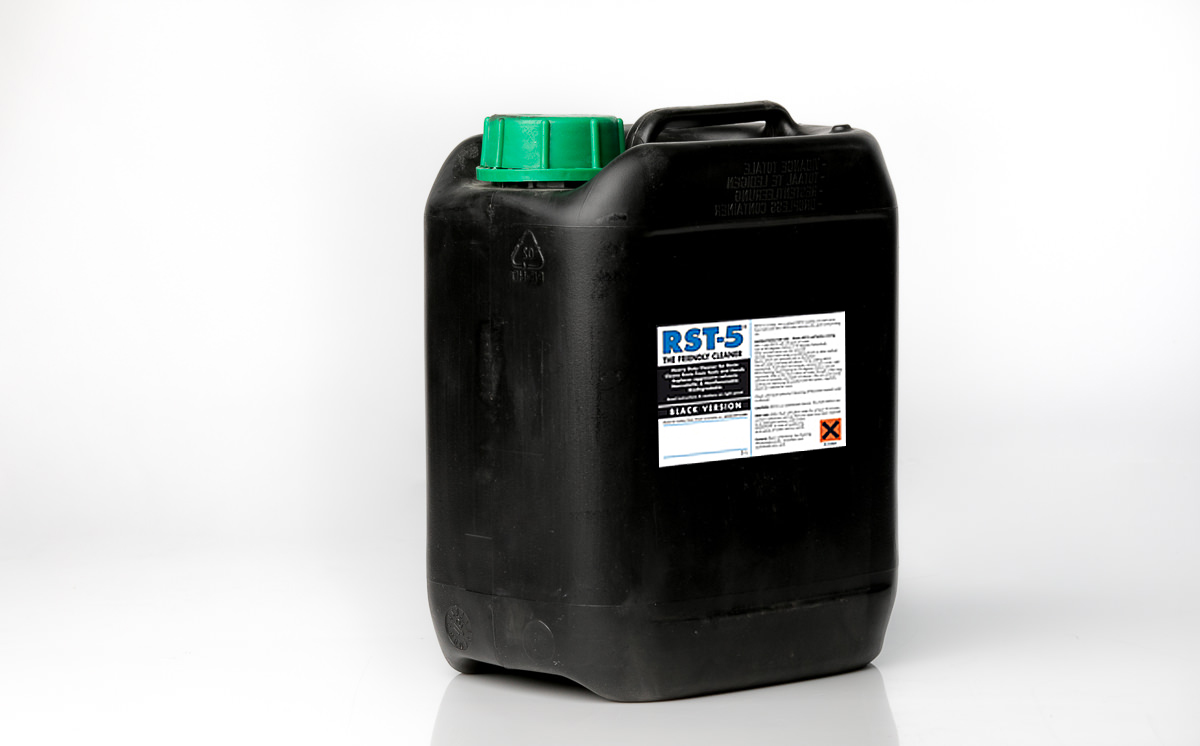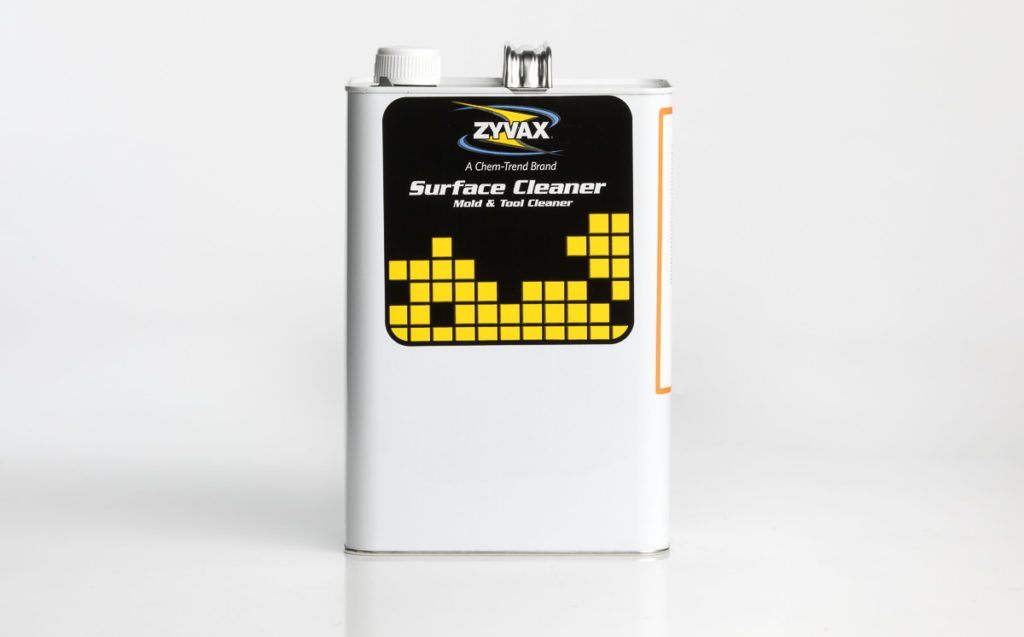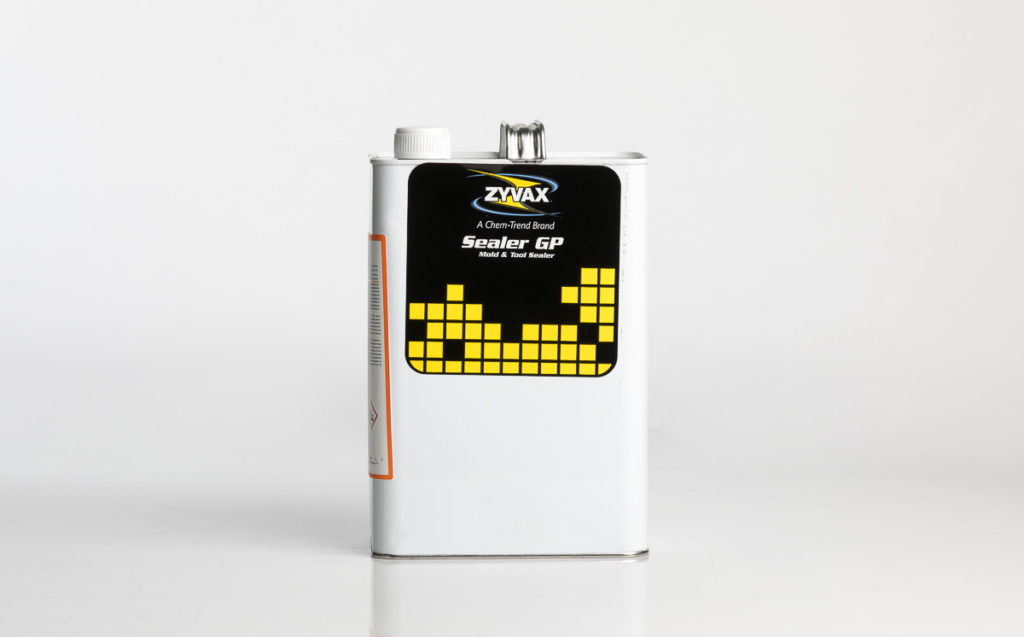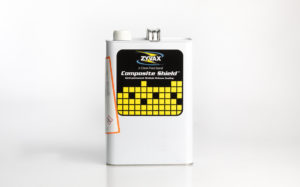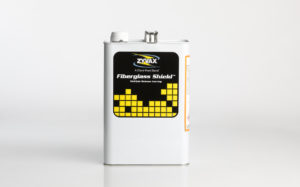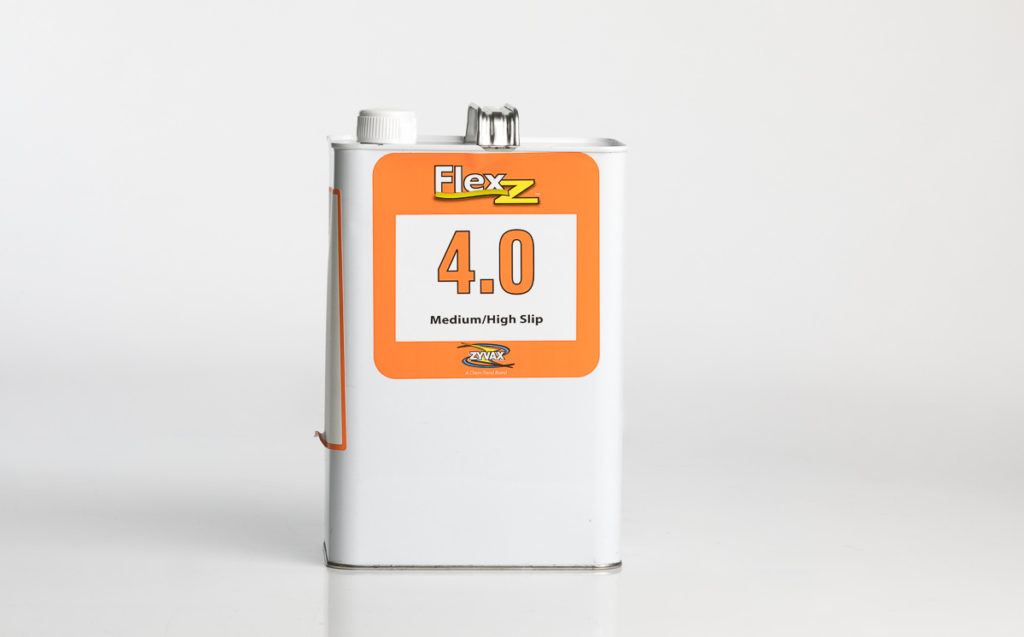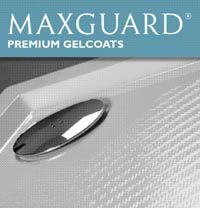1. Mould surface preparation.
It comprises polishing in case of periodical renovation of moulds. This action is aimed at removing resin and wax concretions which cause the loss of uniform gloss at the goods (smudges, dulling) from the mould previously being in operation. Polishing pastes which do not contain silicone should be used for polishing. Polishing may be performed manually or mechanically with the use of, at the first stage, sponge shields and water cooling (sprinkling), and then brightening with shields, the so-called dashed plaster.
During mechanical polishing attention should be paid to:
- cleanliness of shields (risk of scratching the surface),
- even shifting of the shield at the surface for the purpose of avoidance of local overheating of gel-coat,
- effective, firm grip of the polisher preventing accidental hit against the mould surface,
- precise cleaning of the mould surface with water to remove the paste residues after polishing is finished.
2. Application of the separation layer.
The separation layer enables the product separation after completion of lamination. The barrier which enables the gel-coat to adhere to the mould is most often made by a composition of special synthetic and natural waxes. The application method is usually defined by the manufacturer thereof.
Most frequently the following system applies:
- for new or regenerated moulds – application from 5 to 9 times at the intervals o 2 to 4 hours. The application is carried out with the use of a cotton cloth – application with a thin layer at the surface of ca. 0.5 m2 (A). It is important to maintain a proper, thin layer of the paste with no explicit thick smudges (a puppet-twisted cloth with the paste is a well-tested method). After the application of the paste at the surface next to it, of ca. 0.5 m2 (B), you should go back to surface (A) and gloss polish the previously applied and partially vaporized paste at the surface (A). The remaining areas of the mould surface should be polished with such an alternative system. The remaining layers of the release agent should be applied after ca. 2-4 hour break. It is recommended to leave the last but one layer after polishing of the mist (after initial vaporization of the paste) for 24 hours (for a night) and polish the surface after it has hardened. The last, sixth layer should vaporize, prior to the application of gel-coat, for ca. 6 hours and it should be polished carefully.
- for moulds in operation – one-off, interoperational application depending on needs resulting from the occurrence of irregularities at the product demoulding. The time from the completion of the operation to the application of gel-coat should amount to ca. 3 hours.
Antistatic cloths should be used for dedusting of moulds before the application of gel-coat. Attention should be paid to the cloth description – cloths containing silicone must not be used – risk of damage of the separation coat and the risk of the product sticking to the mould.
3. Gelcoat application.

Gelcoat is the first, decorative and protective layer of the laminate. The final effect of the product aesthetics depends on proper application of the gel-coat. Proper thickness of gel-coat is decisive of the laminate durability and its should amount to ca. 0.6 – 0.8 mm (wet). Usually it is obtained by double application of gel-coat. It is significant that the first layer is thicker than the second one. Proper thickness of the first layer amounts to ca. 0.5 mm (wet). It ensures good gelling of gel-coat and after the period of ca. 90 minutes effective application of the second layer. GE series gel-coat by ASHLAND applied this way may be covered with laminate not earlier than after ca. 90 minutes. Simultaneously, the manufacturer recommends that the maximum time of leaving the gel-coat in the mould does not exceed 12 hours. It is most favourable to apply the 1st layer of the laminate within 4 hours from the application of the second layer of gel-coat. In case of tray moulds, in which styrene vapours may deposit, it is recommended to position them askew in order to enable airing of the moulds. Large moulds with complex shapes (concave) should be positioned in a manner which enables to turn them or change their position to facilitate styrene vapours to flow out. The mould and the gel-coat temperature cannot be lower than 18°C. It is recommended to maintain the temperature at the level of 20 ÷ 23°C. In hard-to-access places, by internal edges, attention should be paid not to exceed the admissible thickness of the gel-coat applied.
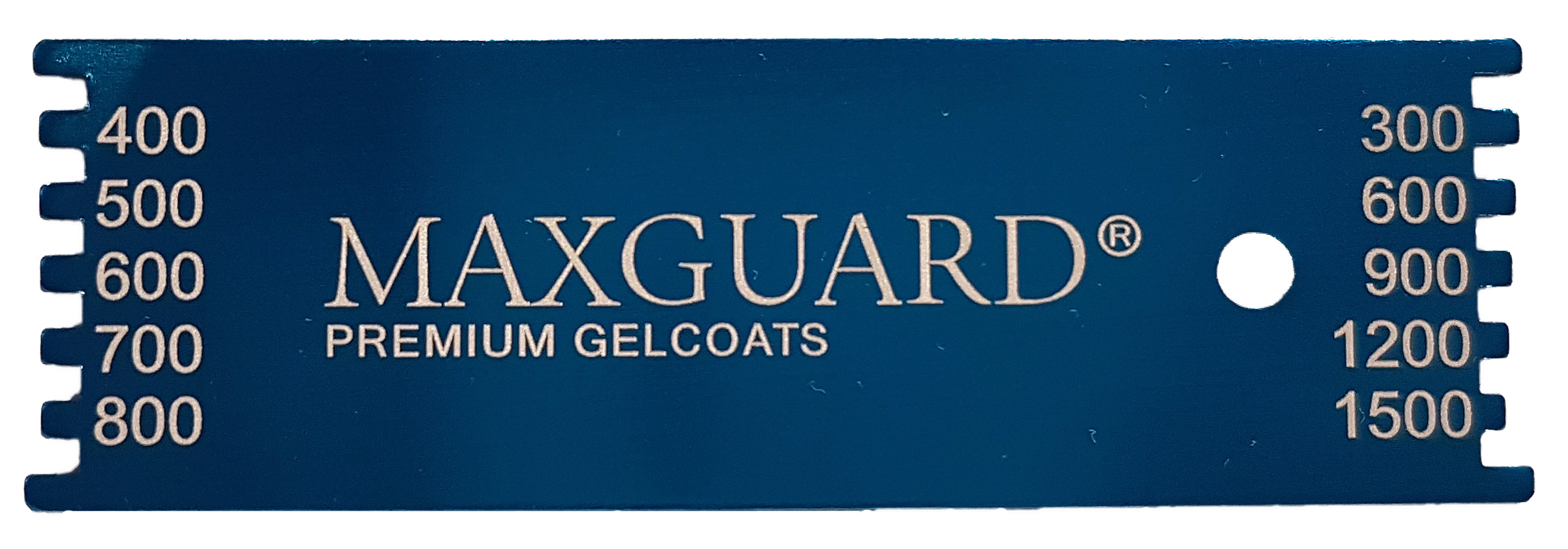
Gelcoat should be mixed carefully prior to the use. Initiator added in the amount of 2% should be carefully mixed with gel-coat. Mixing time of ca. 1 minute is practised. Gelcoat should be prepared in thermoplastic containers e.g. made of PE, PP. Flat brushes with the width adjusted to the degree of the mould complexity and the thickness of ca. 5-8 mm should be used for the application. Prior to the use, the brush should be prepared by cutting the corners – rounded edges of the brush eliminate ropey finish at the gel-coat layer applied (longitudinal traces, interruptions in the surface coverage, unpainted areas and double lines at the band edges).
The life of the gel-coat activated with the initiator amounts to ca. 8 – 12 minutes. In case of occurrence of partial gel, gel-coat application onto the mould should be stopped as this will hinder subsequent lamination.
4. Lamination.
The lamination process is started with the application of the resin layer onto the gel-coat surface, and then the application of the glass mat. Efforts should be made for the mat saturation to take place with resin penetrating from the bottom. Saturation of the mat reinforcement layer (mat, fabric, mat fabric) with resin from the bottom eliminates the risk of performance of airlocked laminate. Various kinds of brushes (mainly flat ones), soft rollers with various diameters and metal rollers (or made of Teflon or other plastics), used for driving in the mat saturated with resin to the surface and for removing the air bladders found in the mat and under the mat, should be used for laminating. It is particularly important to evenly roll the laminate and to smooth it after the application of the last layer of the mat.
The use of the resin, with respect to the glass mat (correct use proportion is 2:1), should be controlled on regular basis during the lamination process. The contact method enables to obtain on average 30% of glass content in the laminate (correct range: 28÷33%).
While adding the initiator, special attention should be paid to careful mixing to avoid splashing of the scorching substance. Any works with the initiator should be carried out with the use of personal eye and skin protection. Never mix the initiator with accelerants. Any soils to be washed down with water and dirty cloths to be stored temporarily only in metal containers with a small amount of water preventing possible self-ignition. Never pour initiator from other containers into the factory container. In case of the application of accelerants, the place of their storage and application cannot be located at a close distance from the initiator. Direct contact of substances may lead to explosion. Laminates may be executed as only glass composites or with a sandwich technique with inter-layer filling e.g with Firet Coremat fabric with various thickness or PCV – Herex foam. The consumption of resin amounts to ca. 0.6 kg per 1m2 and 1mm of Firet thickness. This means that for saturation of 1m2 of 3 mm firet, 1.8 kg of resin should be used. Using Firet, one should remember that its contact with acetone leads to its degradation and partial loss of its proper thickness. Herex foam, depending on the surface shape (convex, concave, flat) should be adhered to isophthalic resin: Aropol K530TE or M530TA (orthophtalic series M105… does not bond, lack of adhesion between the PVC foam and the polyester and glass laminate) or light polyester putty is used for that purpose. Glass mats with powder binder (resistance to osmosis) or emulsion binder (standard) should be prepared beforehand, aiming at the elimination of the cut edge overlap. In hard-to-mould places, filling putty could be used, which eliminates potential air craters under the gel-coat e.g. in sharp internal edges. For the purpose of full control of the location of the first layer of the glass mat, it is recommended to interrupt the process after the application of that layer and to continue the process after gelling of the layer. Before continuation, detailed surface inspection, with possible remedy of the defects detected, should be performed. The quality and the looks of the product surface depends on the correct performance of the 1st layer laminate: the first layer of the laminate, tightly sealing the gel-coat after gelling, constitutes a kind of a barrier layer for harmful action of styrene contained in the resin saturating successive layers of reinforcement and it effectively protects gel-coat against possible defects, disqualifying the quality of external Surface.
5. Mechanical treatment and internal surface topcoating.
The product laminate is made with the surplus of ca. 20 mm from the edge in order to eliminate non-laminated parts and delamination at the edges. It is recommended to cut the laminate edges with a knife after the completion of the lamination process. The layers cut must be partially gelled. It is important to check the amount of the time required for partial gelling. Too early attempts of cutting result in jagging of the fibres, whereas delayed cutting prevents the laminate hardness. Only in justified cases (precisely defined thickness and laminate content at the edges) is the surplus cut mechanically after the laminate hardens, making sure that the lamination process is not taking place at the neighbouring stations (risk of dusting). Any additional lamination may be performed within 24 hours from the completion of lamination. In case of performance of additional lamination of the product being in the mould, the time by de-moulding is counted from the completion of the aforementioned operations. After lamination the product must stay in the mould, in the processing conditions (temperature, moisture) for at least 24 hours from gelling of the last layer of resin.
The final treatment of edges is performed after de-moulding. Any places where fibres were devoid of the resin shield and are exposed to direct action of water and moisture (edges of the product elements, edges of drilled openings etc.) should be secured by means of painting with catalysed structural resin.
For the purpose of full laminate protection, topcoat with the thickness of 0.3 – 0.4 mm should be applied at internal product surfaces. During application accidental brush movements in various directions should be eliminated. Repeated interference with previously applied topcoat layer, which already got covered with paraffin barrier, leads to tearing it off and non-aesthetic diversification of the surface looks.
Connecting of elements of a large product is performed mechanically (bolts, screws, rivets) or chemically (bonding and putty sealing, wet laminate sandwich bonding, additional lamination and lamination).
